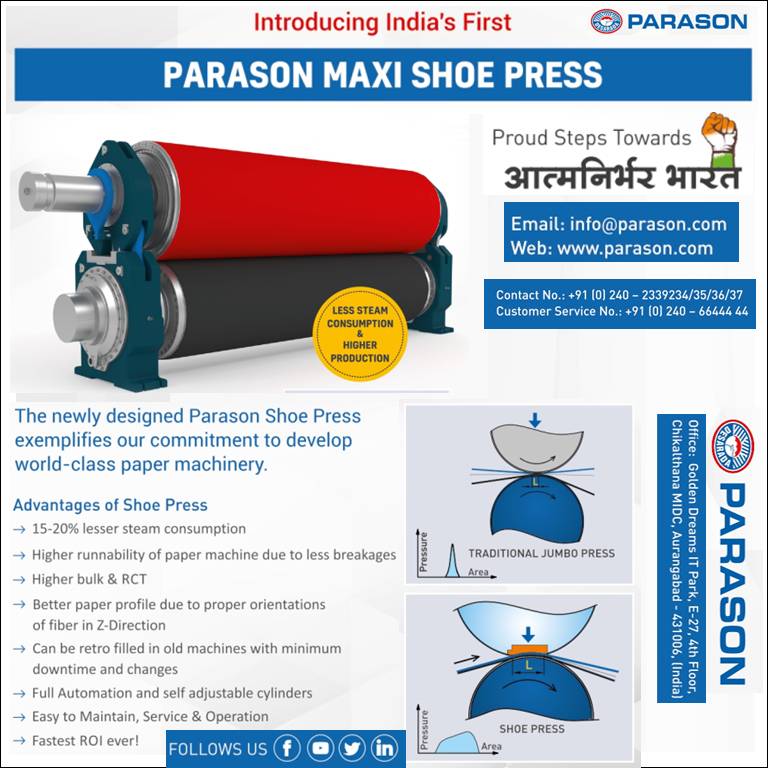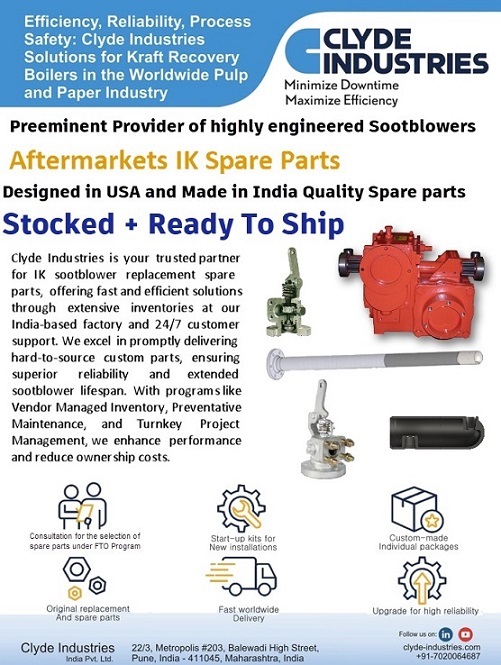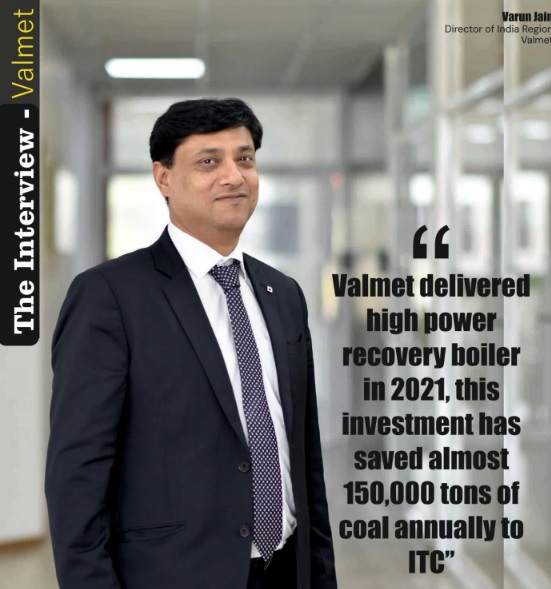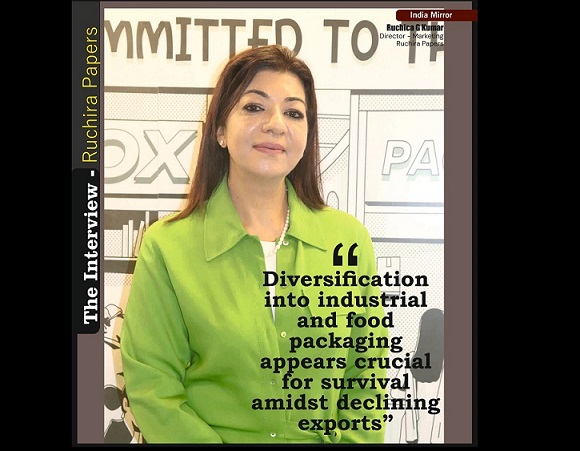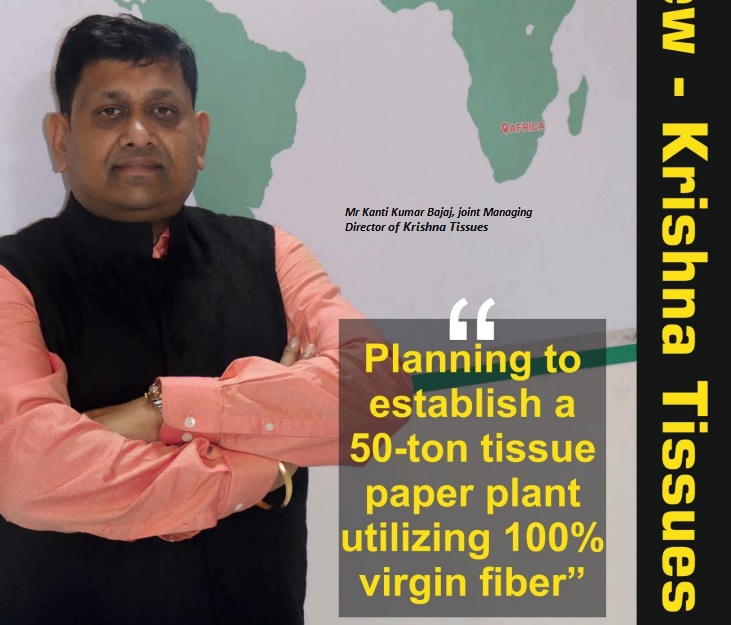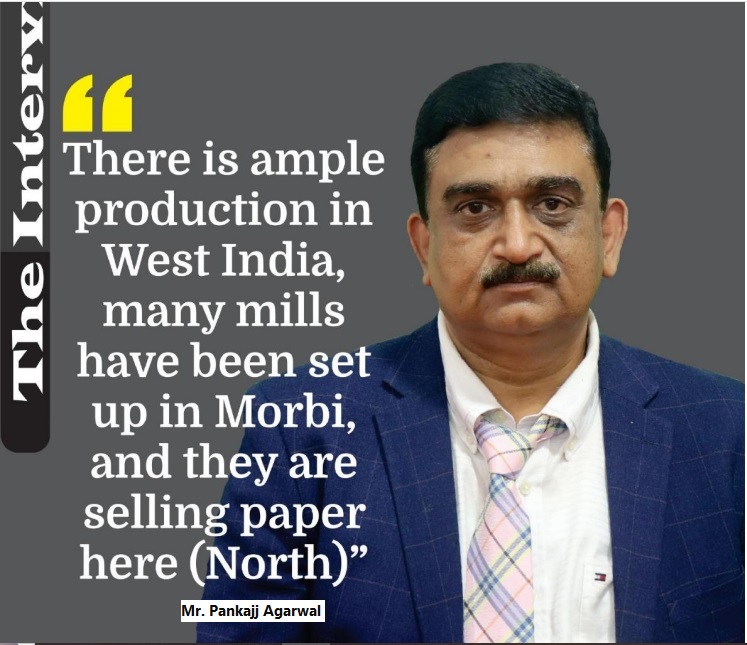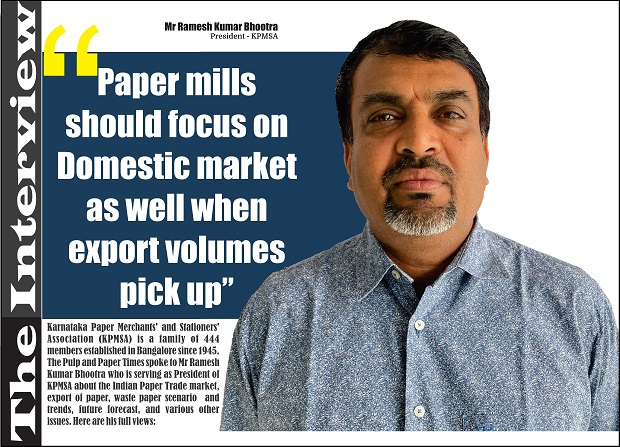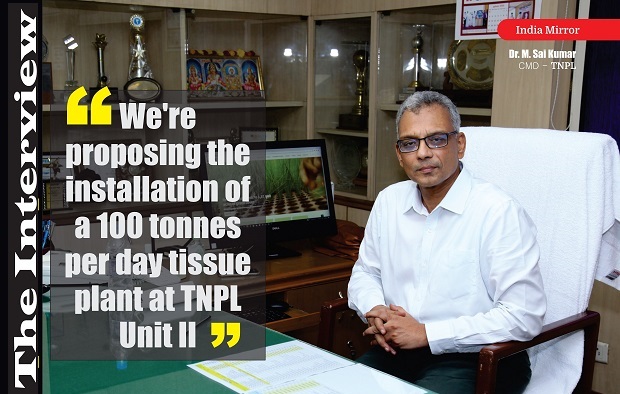“Large Mills are converting their machines into brown paper, people are tending to use more recycled paper than virgin paper,” says Mr. Inder Aurora, Tradecom International
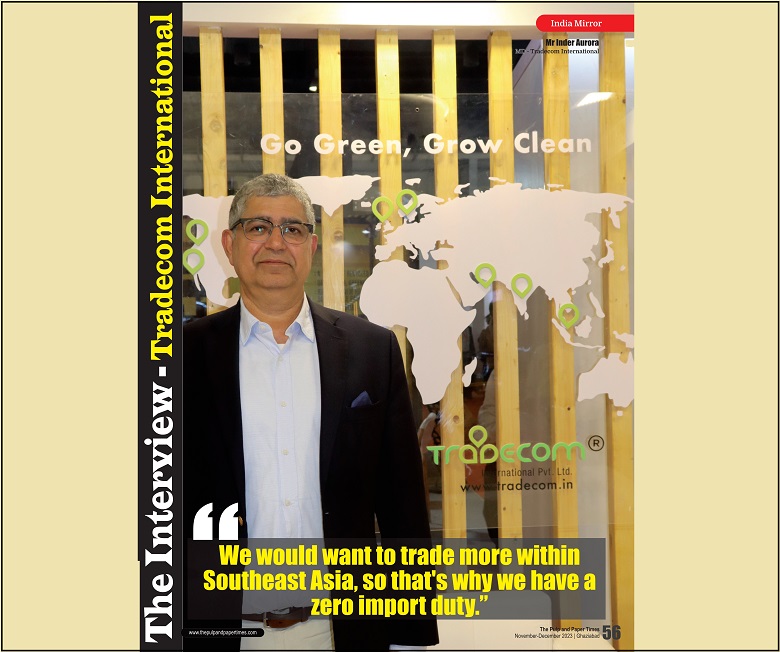
“Large Mills are converting their machines into brown paper, people are tending to use more recycled paper than virgin paper,” says Mr. Inder Aurora of Tradecom International
- Prices go up and down depending on whether China is in the market or not
- All the big mills in India are setting up their own pulp lines to make their own BCTMP hardwood
- We would want to trade more within Southeast Asia, so that's why we have a zero-import duty
In an exclusive interview with The Pulp and Paper Times during Paperex 2023 in December, Mr. Inder Aurora, Managing Director, Tradecom International Pvt. Ltd. shares his thoughts on several topics, including quick review of the present recovered paper trade , import of paper, pulp market, sustainability in the raw material supply chain. Here is the whole interview he gave.
Q: please share a small introduction of Tradecom International
Tradecom International was started in 1988. It's been over three decades now, so we deal in recovered papers and wood pulp, and our customer base is small and medium mills in terms of imported recovered paper and wood pulp. Our customer bases are all large integrated pulp and paper mills, and on the unit side of the business, we have a couple of verticals. We are wholesale dealers for ITC as well as running converting centers for ITC, and we also import liner boards and high-quality flutings and customize them at two locations, one in Pune and one in Sonipat, and supply them to all the converters on a pan-India basis.
Q: Being a reputed importer of recovered paper, how do you analyze the waste paper market?
I can only say that there has to be growth in India in the paper industry. The major raw material will continue to be recovered paper, whether it is imported or domestic. Domestic collections and infrastructure will eventually improve, so we will be able to utilize more and more of the waste we generate within the country and import it to countries like America and the UK that have surplus waste paper that they will continue to ship to India because India is now the largest market. Even though China has banned recovered paper, they continue to buy large volumes via their operations in Southeast Asia in terms of recycling pulp.
I must mention here that there has been a big announcement by ITC: they are putting up an INR 4,000 crore investment in Uttarakhand to come up with the integrated pulp and paper mill, so this is one of the major expansions that we have seen recently in terms of integrated pulp and paper mills, but having said that, the majority of the requirements of India would be fed with imported and domestic waste paper.
Q: India consumes large quantity of imported waste paper. There are new large capacities coming up in the Europe and America and they will also consume waste paper. Will it be difficult for Indian Paper mills to get the raw material at a lower price? how do you see that this situation?
Let me put it this way: globally, pulp and paper production is over 400 million tons, and on average, there is a 5-7% growth in terms of production and consumption. Also, that will finally relate to the generation of waste paper, and China is indirectly importing by setting up mills across the world to make recycled pulp and send it to their plants in their home country, and China has been a major player not now but from day one. In fact, when they stopped importing waste paper, they were a 50% net importer of waste paper from all over the world, and now slowly, by setting up these mills, they will scale up to their 50% recycle pulp thing, but the rest of the 50% is available for the other countries, and India, also being a major pulp and paper industry, is growing very well.
I think there should not be any challenge in getting volumes of what we want, and our domestic collection is very low at the moment in terms of what you see in Germany and Japan, which is touching about 70 to 80%. Mills who are making paper from virgin pulp or they're importing market pulp, so that waste also eventually gets into the stream and is available for the mills for recycling, so I don't see much challenge.
Q: There's a severe fluctuation in the waste paper prices. How a paper mill can ensure the sustainability in its supply for the imported recovered fibre with the lower price ?
Prices are something that is 100% based on market demand and supply. We have seen lately the volatility on two accounts. Let's say when we talk about waste paper prices in the USA, we have seen a lot of large mills or groups like Cascades and Domtar converting their machines into brown paper, producing test liners and flutings, so there's a lot of demand from those mills. These are large mills that have been converted, and also from the point of view of sustainability, people are tending to use more recycled paper than virgin paper, so obviously there has been good demand within the country, which has driven this price to be on the higher side, but if somebody wants to import at this price, waste paper is available.
The cost of any waste paper being imported into the country, there is I would say 60 to 70% fiber and 30% shipping cost so shipping has been a very down after the Covid, this so something of the compensate to the net CIA prices.
Q: There are new capacities in Pulp generation coming in overseas market; we might see the dumping of pulp in to Indian market at lower price. Do you think that it will hamper the profitability of Indian paper mills?
I don't hear much major expansion in the pulp segment across Asia; in fact, major producers in Asia like APP and April are putting machines after machines; they're also expanding in the tissue segment very aggressively, and they're trying to consume all their pulp. The only thing is that the availability of pulp from these mills to the market is not there as much. I don't see major expansions there. India will have to when they have to import market pulp. Most of the mills, which have their own integrated operations, are also facing challenges with wood prices. This volatility in pulp has also been there laterally. We saw hardwood pulp prices going sub-$500, and now we are talking about $600+. Now, China’s economy is pretty closed in terms of various growth elements. Once they wake up, there's probably going to be huge demand from China. Once China stops buying paper, prices go down, so I feel this challenge of volatility in prices, be it waste paper, pulp, or paper, is going to be there, and we have to get used to it.
Q: Imported pulp is a one of the raw material for paper mills, what appreciation do you project in the demand of imported pulp in next 5 years? Also do you think that tableware manufactures could be the new consumer of the imported pulp in future?
I am not very knowledgeable about this, so I can't say much, but I can say that the mills that don't have enough pulp capacity compared to their machine capacity are the main users of market pulp. On the other hand, non-wood paper mills require a specific percentage of long fiber to supplement their furnish. Most large paper mills are primarily covered by their own pulp operations. Thus, there hasn't been a significant growth. We do hear about Satia Industries expanding a machine and other things, but that hasn't really altered the dynamics of pulp demand in India. BCTMP pulps are the only area where there is a significant need for pulp that has grown over time.
A lot of mills are coming into BCTMP pulp, and there has been a greater demand for all the pulps in BCTMP. BCTMP soft food has to be imported, but all the big mills in India are setting up their own pulp lines to make their own BCTMP hardwood, but then softwood has to come from North America or Scandinavia. So, demand in Europe and China or within North America has not grown as much, so this pulp is available to all these mills, but again, prices go up and down depending on whether China is in the market or not.
Q: As claimed by some paper mill association, that excess import of paper is hampering the small & medium Paper mills viability; How would you define this situation?
I don't want to comment on anything that will lead to a controversial discussion, but I think the open economy is always better than a protected economy. It gives a chance to improve your operations, and that eventually leads to longevity in the business. If you are in a protected environment, in a sense, you're not exposed to the international situation, and eventually you will get exposed regardless of how much you protect your economy. So I can only comment that I'm from a school where I would vote for an open economy, but I would not get into deeper details about whether there should be anti-dumping duty or not.
Q: Don’t you think that there has to be a level playing field for importer and paper mill; import of paper should be at a benchmark price in order to prevailing healthy market competition. Your comment please.
Anybody can have a different perspective, so today we are signing up ‘N’ number of FTAs (free trade agreements) with different countries around the world to increase trade between us, and then, as an ASIAN region, we want this region to develop to be known as Europe of Asia or North America of Asia. We would want to trade more within Southeast Asia, so that's why we have a zero import duty. Today we are seeing mergers of industry across the world, like, in a sense, recently, Smurfit Kappa and Westrock are merging, so this will create a giant, but at the same time, it will also give room for other players to expand. Today they used to compete and whatever the end result of all that competition was, but now they're going to work together and they're going to play with the market, but at the same time, there are other groups also around the world, so they will have a strategy to put in place, so that doesn't mean that this will lead to something bad.
Web Title: “Large Mills are converting their machines into brown paper, people are tending to use more recycled paper than virgin paper” says Mr Inder Aurora of Tradecom




 Join WhatsApp Group
Join WhatsApp Group Join Telegram Channel
Join Telegram Channel Join YouTube Channel
Join YouTube Channel Join Job Channel (View | Submit Jobs)
Join Job Channel (View | Submit Jobs)



